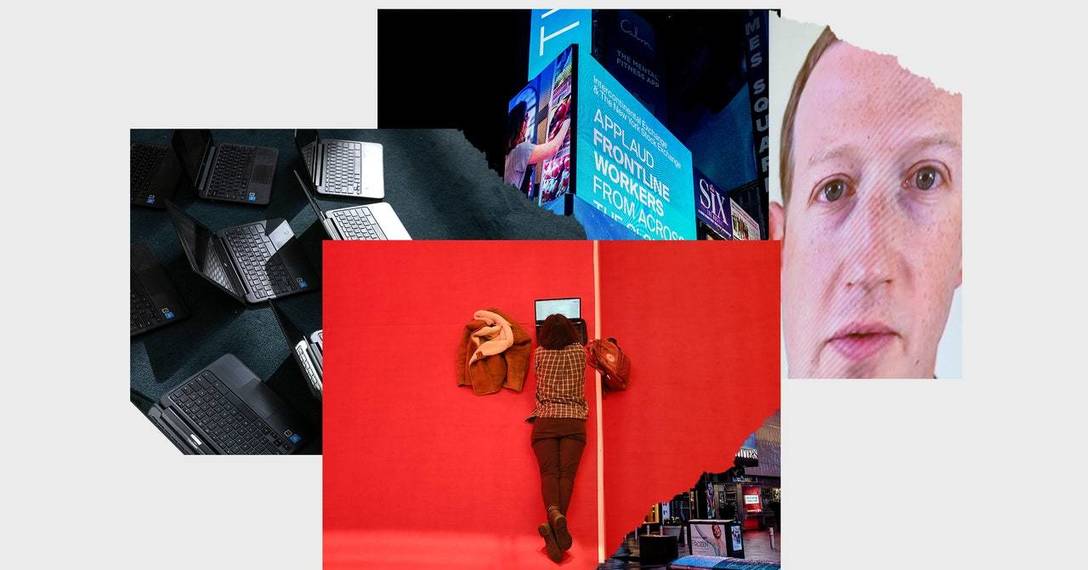There are piles of research papers in support of this idea, showing that companies’ returns on investment in digital marketing are generally anemic and often negative. One recent study found that ad tech middlemen take as much as a 50 percent cut of all online ad spending. Brands pay that premium for the promise of automated microtargeting, but a study by Nico Neumann, Catherine E. Tucker, and Timothy Whitfield found that the accuracy of that targeting is often extremely poor. In one experiment, they used six different advertising platforms in an effort to reach Australian men between the ages of 25 and 44. Their targeting performed slightly worse than random guessing. Such research indicates that, despite the extent of surveillance tech, a lot of the data that fuels ad targeting is garbage.
Even when targeting works as promised, and the ads are served to their intended audience, many are simply never seen, because they load somewhere out of sight, like the bottom of a webpage. The rise of ad blocking makes the problem even more acute. Hwang cites a 2015 Adobe estimate that ad blockers deprived online publishers of $21.8 billion in annual revenue, more than Facebook’s entire take for that year. Then there’s the astonishing level of digital ad fraud, including “click farms” that serve no purpose other than for bots or paid humans to constantly refresh and click ads, and “domain spoofing,” in which a bottom-dweller site participates in ad auctions while disguised as a more prestigious one. Hwang cites a 2017 study finding that, between lousy ad placement and outright fraud, “as much as 56 percent of all display ad dollars were lost to fraudulent or unviewable inventory in 2016.”
Despite the extent of surveillance tech, a lot of the data that fuels ad targeting is garbage.
It’s fair to wonder why, if programmatic advertising is such a bum deal, so many brands continue to pour money into it. The reasons are manifold and overlapping. To begin, most of the people responsible for ad spending have no idea where their ads are actually running, let alone how they’re performing, and certainly have not brushed up on the latest research papers. That’s especially true for the small and medium-size businesses that make up the bulk of Google and Facebook advertising customers. I spoke recently with the owner of a successful online audio equipment store who had recently learned, thanks to a chance encounter with an expert, that 90 percent of his programmatic ad budget was being wasted on fraudulent clicks. Most other merchants simply never find out what happens after they send an ad out into the world.
Hwang identifies other structural factors that keep the bubble inflated. The online ad market is laden with perverse incentives to hide the true value of the assets for sale. Advertising agencies engage in arbitrage, buying ad inventory at a discount from publishers and selling it at a markup to their own clients. So, too, do the digital platforms that serve as middlemen between buyers and sellers. There is no independent arbiter. The nearest thing, the Media Ratings Council, includes both Facebook and Google as members, along with other ad tech companies. The council is supposed to set objective standards to measure ad impressions, but in practice its role may more closely resemble that of the credit-rating agencies that slapped AAA ratings on junk mortgage securities.
Hwang moves through this evidence rather briskly, but most people who study programmatic advertising have ended up with roughly the same degree of cynicism. Sinan Aral, a tech entrepreneur and academic who directs the MIT Initiative on the Digital Economy, surveys the research exhaustively and cautiously in his book The Hype Machine. He notes that while “some digital and social media messaging is quite effective,” it’s common for platforms and media agencies to triple (at least) its apparent value by wrongly crediting digital ads for purchases that consumers would have made anyway. Aral calls this “the most widely used shell game in business today.”
Or, as Hwang puts it: “The whole edifice of online advertising is, in short, bunk.”
Sourced through Scoop.it from: www.wired.com



Leave A Comment